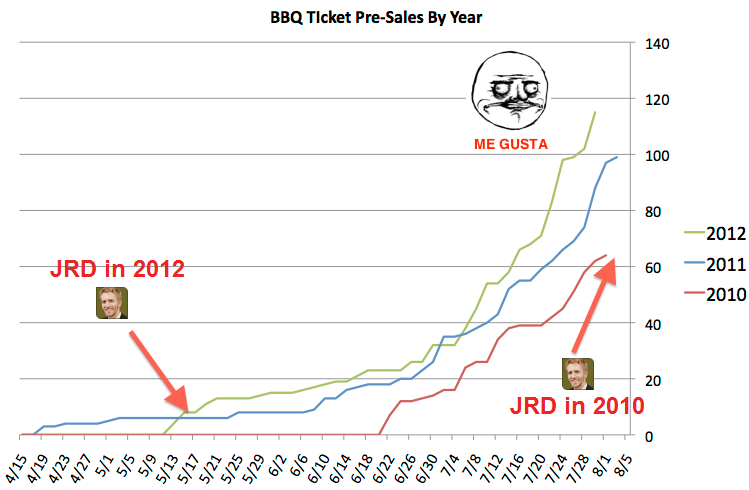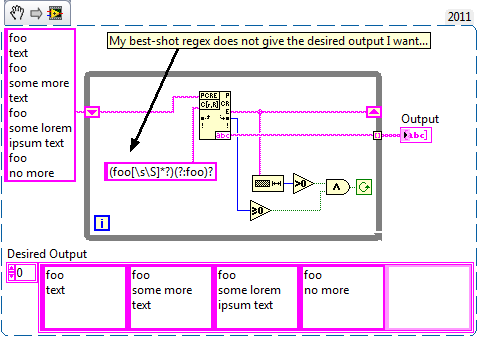-
Posts
364 -
Joined
-
Last visited
-
Days Won
40
Content Type
Profiles
Forums
Downloads
Gallery
Everything posted by JackDunaway
-

CTRL+SHIFT+ Shortcuts sometimes not working in LabVIEW
JackDunaway replied to JackDunaway's topic in LabVIEW General
OK, I have verified that CTRL+SHIFT+3 works just fine (That's CTRL+# which toggles grid visibility), yet CTRL+SHIFT+Z et al. still do not work. This would indicate keyboard modifiers are not being eaten by the VM, and that LabVIEW is handling at least one CTRL+SHIFT shortcut. Why isn't it handling the others?? Am I misconfigured some way? Can someone just do a sanity check for me on E, S, and Z on a machine running LV2012? Thanks! -
The two most important pieces of hardware for a successful day of LabVIEW coding are a Mac and a comfy pair of socks... but coming in close third is pair of noise-cancelling headphones! For the 2012 LAVA BBQ, Wirebird Labs LLC - fresh to the LabVIEW Tools development arena - will be giving away a set of Bose® QuietComfort® 15 Acoustic Noise Cancelling® Headphones. Inline cord controls make it a viable replacement for iPhone calling, and Songza has never sounded better! I’ve personally vetted and enjoyed my own pair during extreme LabVIEW dev sessions, but heed this warning: a mere tap on the shoulder from a well-wisher becomes a terrifying sneak attack when you're engrossed in your alternate execution space of audial serenity. Pictured below: rare photo of a feral graphical developer in his natural habitat, caught unawares due to the headphones.
-
Mr. Mike was that guy, and I was that guy after that guy. I'll say once, I'll say twice. You don't want sloppy seconds when it comes to BBQ tix. (Long story short, in 2010 I bought the ticket off of a kind LAVA moderator willing to give up his ticket, who "Doesn't like BBQ anyway")
-
Hearty congratulations to Mr. and (especially) Mrs. jgcode. Babies are the best.
-
I'm unable to write comments on that document <headscratch>, so I'll ask here: Could you post a PDF in addition to (or in lieu of) the docx? (The doc references embedded pictures, but I'm not seeing any - probably a portability prob that hopefully PDF can solve.) Alternatively, maybe paste the RFC into the community page itself, in case the Community doesn't index docs? Thanks!
-
LAVA BBQ is a great place for the LV Community to help your wife to celebrate her 30th birthday!
-
Count me in - ticket bought! This was certainly the highlight of NIWeek 2011 last year. Can't wait to hear more of Poet Laureate Nattinger's limericks and Admiral AQ's sea songs ***EDIT: Cross posted invitation to Breakpoint: http://forums.ni.com/t5/BreakPoint/Hope-to-meet-you-at-LAVA-BBQ-during-NIWeek-2012/m-p/1994967/highlight/true#M19185 ***
-
Well, I won't call you stupid, but a 64-bit integer has no prob squeezing into a size 8 ("hey! who's calling me a bigint??").
-
Any interest in using CrowdTilt or similar to raise funds to contract out the migration? I would chip in.
-

CTRL+SHIFT+ Shortcuts sometimes not working in LabVIEW
JackDunaway posted a topic in LabVIEW General
CTRL+SHIFT+E (and also CTRL+SHIFT+Z and CTRL+SHIFT+S) shortcuts do not work on a few of my virtual machines. Anecdotally, this appears to be limited to LV2011 and up All machines are Parallels 7 virtual machines running on OS X Lion Again, some work, and some don't - all with identical (as far as I can tell) VM keyboard and environment settings What's interesting: CTRL+SHIFT shortcuts work just fine in other applications on the affected VMs - it's only LabVIEW that does not respond to the CTRL+SHIFT shortcuts. This leads me to believe that the Parallels VM information is a red herring, and that the same problem *might* affect a native Windows installation. Any ideas? -
I have used both Bitbucket and Kiln, and could recommend either for Hg hosting. Take a look at both their feature sets, and see which makes more sense for you (e.g., is this for personal use? how many people will share the repo? do you need to allow public access to the repo?) And all-day all-night, I would recommend either these services over "a remote directory out there in the 'cloud' ".
-

Developing OpenG while working for a company
JackDunaway replied to crossrulz's topic in OpenG General Discussions
If you're just looking to "scratch your creative itch" for personal learning or recreational programming, I would recommend getting into the LabVIEW Beta program. Benefits: They offer no cost licenses that last essentially year round (the license lasts longer than the Beta period) (the only real cost is confidentiality - you can't distribute Beta source code) You get to use the coolest new features of LabVIEW You get to help out the quality of LabVIEW by generating bug reports You get an opportunity to influence LabVIEW features in development and best of all, you get access to the Beta Forum, which is about the highest concentration of in-depth LabVIEW knowledge you can find. There are constantly R&D members patrolling and participating there - it's outrageously resourceful (it's almost as good as LAVA ) -
Cool, and also, +1 for using "Names" Name Format on the calls - good style.
-
Cool! Just a quick couple of gotchas (that got me) prior to running the examples in this library: Install OpenG String Library Use LV 32-bit since 64-bit LV returns Error 12 for the SQLite DLL calls (I wonder if wrapping the SQLite exe rather than DLL would give better platform independence? just thinking aloud) Those two things settled, both examples run like a champ.
-

Non-Capturing Group in Regular Expression
JackDunaway replied to JackDunaway's topic in LabVIEW General
I'm glad you asked. I have not been able to figure out how to make dots match newlines by turning on single-line mode. LabVIEW does not seem to honor this setting - am I doing something wrong? I'm a little confused by this statement - writing a regex is writing my own parser. -

Non-Capturing Group in Regular Expression
JackDunaway replied to JackDunaway's topic in LabVIEW General
Gotcha! Well, the particular example above is just a subset of what I'm *really* trying to do, (no, "foo" is not the real section header ). If you saw the full parsing requirements, we would agree that a regex with a few submatches syntactically knocks the socks off of a solution with nested token searches. ***EDIT - And after analyzing the problem a little further, the "tokens" are expressions themselves, not static, so slice-and-dicing the string could really get messy! *** -

Non-Capturing Group in Regular Expression
JackDunaway replied to JackDunaway's topic in LabVIEW General
Good point - it works in LV no prob - probably just a difference in the terminal condition of the loops between my app and RegexPal highlighting. So, as far as I'm concerned, Darin's solution works just fine! And, why would you steer away from regexes? -

Non-Capturing Group in Regular Expression
JackDunaway replied to JackDunaway's topic in LabVIEW General
Nice! That's getting close, but it's missing the very last section - here's a screenshot from RegexPal: By the way, this helps enough to get me past an immediate hurdle, but can the regex be refined further to match the last section? -
I'm trying to use a part of input text inside a regular expression without capturing the text in the match, but can't figure out how to construct the regex. Below is a snippet that shows what I'm trying to do, and what regex I've tried. Basically, the string is composed of sections that start with "foo", and there is no terminal string that denotes the end of a section. In other words, you know the section has ended when you run into the next "foo", or if you hit the end of the string. I'm trying to divide this string into an array of sections. (Note: you can copy the below input into http://regexpal.com/ rather than firing up LabVIEW) By best-shot regex: (foo[\s\S]*?)(?:foo)? An example input: foo text foo some more text foo some lorem ipsum text foo no more And the snippet: Any ideas?? Thanks in advance!
-

Typecast - What does "*(type *) &x" mean?
JackDunaway replied to JackDunaway's topic in LabVIEW General
Thanks! That syntax was teetering just above my level of C syntax comprehension (rather, tolerance? ) Another notable carry-over is the use of "[]" to signify "array". You can find this C syntax many of the primitive icons themselves, not just the terminal names. (And just for the record: generally, it makes sense to reuse these conventions in LabVIEW rather than invent new analogies. The typecast example is one of the few instances where I might consider breaking this convention, just because the syntax is confusing) -
Earlier today I was showing the LabVIEW Typecast function to a Perl developer, and I got to thinking to myself: "What does the punctuation (operators?) on the output of that function mean?" Can anyone answer the question: What does "*(type *) &x" mean?
-

Register & Unregister or just Register?
JackDunaway replied to Aristos Queue's topic in Application Design & Architecture
It's helpful for the API to have two separate functions. When using "Find All Instances" in the LabVIEW IDE, it's simpler to have all "Registers" in a list and all "Unregisters" in a separate list. An "Unregister" function is more self-documenting than a "Register" with a special-super-secret argument (e.g., "I forget, do I wire -1 or 0 or NaN to unregister?..."). ***Edit*** - agree with Daklu: -
Protohuman instantiation complete! Just cross-posting the birth announcement of our daughter on the NI Breakpoint forum! (Higher res photo at the link above)









